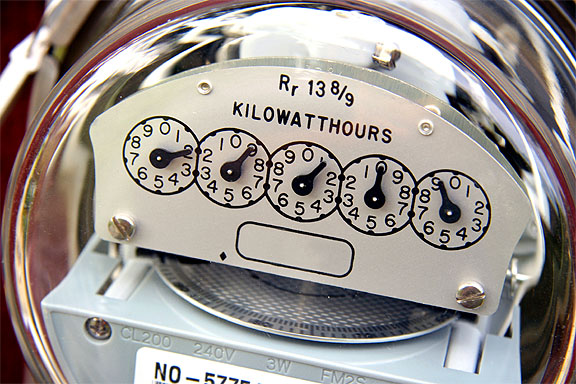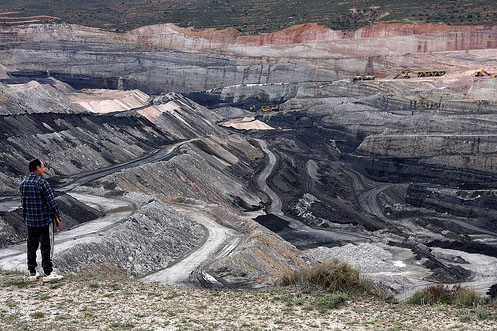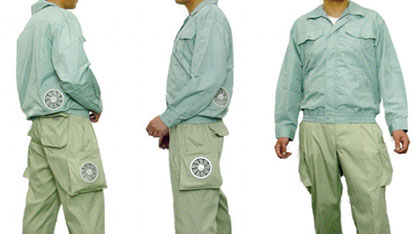What to make of the mixed message in Sunday’s New York Times op-ed by David Leonhardt? Dispelling the prevalent and stubborn myth that environmental measures are a drag on economic recovery is critical to efforts to gain public and political support. Leonhardt attempts to help, but misses some of the most important points.
In a piece with the overused title “It’s Not Easy Being Green” (and, speaking of mixed messages, the opposing title, “It’s Easy Being Green,” is just as cliché), Leonhardt at first downplays the promise and economic viability of a national policy to address climate change. “The alternative-energy sector may ultimately employ millions of people. But raising the cost of the energy that households and businesses use every day — a necessary effect of helping the climate — is not exactly a recipe for an economic boom.” With that, he seems to validate the environment versus economy faceoff.

Is this how to gauge environmental policy? Image source
He then tempers that a bit when he writes “Alternative energy may not be a solution to our economic problems. But neither is it guaranteed to make those problems much worse, despite the continuing claims of opponents.” Faint praise, but at least it’s not condemnation.
And he starts to get it right with “The stronger argument for a major government response to climate change is the more obvious argument: climate change.” Problem is: climate change, in and of itself, has not proved to be a strong enough argument, at least not in our current head-in-the-sands, corporate-driven political arena. It’s clear that in a head to head battle, even with a public relations boost from Sandy and Nemo and the like, the environment still loses out to the economy. So it doesn’t help when Leonhardt continues:
In some cases, [government environmental programs] may even save taxpayers money over the long run. In most cases, however, they probably will not. Government agencies, like households and businesses, use dirty energy today because it is cheaper. And while it’s true that new clean-energy companies may help the economy by earning profits and employing workers, the same is true of coal and oil companies.
Leonhardt misses the boat in exactly the same way, as I pointed out last week, the pro-nuclear power advocates do – seeing only parts of pictures rather than wholes. When he says dirty energy is cheaper, he is looking only at a partial set of costs, ignoring major “external costs” like public health, resource depletion and national security. The savings he refers to are merely the direct ones like reduced energy bills and (inconclusively, in his mind) new jobs. Those are well and fine, but it’s incomplete accounting.
This is the same reason elected officials from coal mining states think they’re doing the right thing in opposing environmental regulations on coal; the loss of coal industry jobs, according to this type of partial accounting, will hurt their constituents. But when true costs such as the health costs for miners and those living nearby and the costs of polluted waters and ravaged land are taken into account, that calculation is turned on its head. (Help me out here – I read a post just last week which cited numbers for exactly this example, but I can’t find it now. Send me the link if you have it.)

The costs of coal mining are far more than just CO2 emissions. Image source
The same point can be made with mass transit. The benefits are not only in the reduced fuel consumption and air pollution that people tend to focus on, but also in time saved due to less congestion and even improved well-being arising from commuting less stressfully as a passenger rather than a frustrated driver. Not to mention the fact that you can safely text your heart away. (See “Public Transportation Saved 865 Million Hours Of Delay On US Roads In 2011.”)
At the very bottom of his column, Leonhardt almost gets it. “In the end, the strongest economic argument for an aggressive response to climate change is not the much trumpeted windfall of green jobs. It’s the fact that the economy won’t function very well in a world full of droughts, hurricanes and heat waves.” Ahah, now we’re talking about the larger picture, or at least some of it. But it’s so far down at the end that it’s all but a footnote, and an incomplete one at that.
Yes, in that battle for public support, if it’s the environment versus the economy – especially in a troubled economic time like this – the environment’s gonna lose. But that’s an entirely wrong scenario, one created by the limited vision of conventional political-economic thinking (and avidly supported by corporate self-interests). I’ve noted this in earlier posts as, of course, others have as well. In a blog post wonderfully titled “It’s not the economy, it’s the stupid paradigm,” Paula Williams writes “the economy and the environment are not separate (contrary to the claims of many economists).”
Public support for environmentalism has been waning since the start of the Great Recession, and not just in the US, as Greenbiz.com notes.
Across eighteen countries, public concern about all six issues – water pollution, fresh water shortages, natural resource depletion, air pollution, climate change and biodiversity loss – is way down from its peak in 2009, with double-digit falls in the proportion of the public considering them “very serious.”
[O]ur figures suggest people are starting to tune…out [messages of doom and gloom]. Ultimately, the challenge for the environmental movement is to articulate an alternative to our current economic model that empowers people rather than constrains them, and that is politically achievable in difficult times.
The alternative economic model is the understanding that our environmental solutions are our economic solutions. That, along with the observation that those combined solutions – contrary once again to the claims of many economists and others — will also improve the quality of our lives, is the foundation of EcoOptimism.


